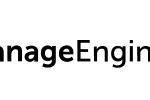By. Adelina Holmes – Principal of Sampoerna Academy Surabaya Pakuwon Indah and SA Online
In the fast-paced and ever-evolving world of education, educators continually seek innovative ways to equip students with the skills and knowledge they need to thrive in the 21st century. One such approach that has gained significant traction in recent years is the STEAM approach, an interdisciplinary method that integrates Science, Technology, Engineering, Arts, and Mathematics into a cohesive learning experience. How does a STEAM education empower students to become critical thinkers, problem solvers, and lifelong learners?
The Birth of STEAM
STEAM, an acronym for Science, Technology, Engineering, Arts, and Mathematics, emerged as a response to the limitations of traditional education. While the STEM fields (Science, Technology, Engineering, and Mathematics) were recognized as crucial for technological and scientific advancements, there was a growing realization that they needed to be complemented by creative and artistic thinking. As an educator with two decades of experience and a deep passion for fostering transformative learning experiences, I wholeheartedly believe in the power of the STEAM approach, how this innovative methodology serves as a catalyst for guiding student inquiry, fostering dialogue, and nurturing critical thinking.
The STEAM approach offers a unique blend of disciplines that transcends traditional silos, allowing students to explore, create, and connect concepts across subject areas. Research consistently highlights the positive impact of a STEAM education on student outcomes. According to a study by the USA National Science Foundation, students engaged in STEAM activities exhibited higher levels of creativity, critical thinking, and problem-solving skills compared to their peers in conventional classrooms.
One of the key strengths of the STEAM approach lies in its ability to ignite curiosity and guide student inquiry. Through hands-on experimentation and project-based learning, students are encouraged to ask questions, seek answers, and uncover solutions. By engaging in authentic, real-world challenges, students develop a senseof ownership over their learning, empowering them to become active participants the discovery process.
Fostering Critical Thinking and Problem-Solving
One of the central tenets of a STEAM education is its emphasis on critical thinking and problem-solving skills. Instead of teaching subjects in isolation, STEAM encourages students to explore complex issues that require an interdisciplinary approach. By integrating the five disciplines, students are exposed to multifaceted problems, which necessitate creative and analytical thinking to solve.
In the STEAM classroom, dialogue becomes the backbone of collaborative learning. Students are encouraged to share ideas, debate perspectives, and engage in constructive discussions. By actively participating in dialogue, students develop the art of effective communication, an essential skill in today’s interconnected world. Moreover, research by the American Institutes for Research found that students engaged in the STEAM approach exhibited improved communication skills and a greater ability to articulate their thoughts and ideas. Students work on real-world projects that encompass multiple domains. This holistic approach compels students to think critically and develop solutions that draw from a wide range of knowledge and skills.
Innovation and Creativity
Critical thinking is the cornerstone of success in the 21st century. The STEAM approach provides students with opportunities to analyze complex problems, evaluate evidence, and apply logical reasoning. By integrating the 5C competencies (Critical Thinking, Communication, Collaboration, Creativity, and Character), the STEAM approach nurtures students’ ability to think critically, adapt to new challenges, and develop innovative solutions.
Creativity and innovation are the driving forces behind progress in today’s world. The integration of Arts into STEM subjects in a STEAM education encourages students to think beyond the boundaries of conventional problem-solving. The Arts component sparks creativity, allowing students to experiment, take risks, and envision novel solutions to complex challenges.
Encouraging Collaboration and Teamwork
A STEAM education fosters collaboration and teamwork, mirroring the collaborative nature of real-world problem-solving. Students engage in group projects and activities that require them to communicate effectively, share ideas, and pool their diverse skills to achieve common goals.
Collaboration is not only beneficial for problem-solving but also for personal growth. Students learn to appreciate different perspectives, work through conflicts, and harness the collective intelligence of a team. These skills are invaluable in both academic and professional settings, where collaboration is a key driver of success.
Preparing for the Future Workforce
The world of work is undergoing a profound transformation, with automation and artificial intelligence redefining job roles and skill requirements. The traditional model of education, focused on rote learning and memorization, is ill-suited to prepare students for this dynamic landscape. A STEAM education, with its emphasis on creativity, critical thinking, and interdisciplinary skills, aligns more closely with the demands of the modern workforce.
Employers are increasingly seeking candidates who can adapt to change, think critically, and approach challenges with innovative solutions. A STEAM-educated workforce is better equipped to meet these demands, as they have been nurtured in an environment that values these skills from an early age.
Overcoming Challenges in Implementing STEAM
While the benefits of a STEAM education are clear, implementing this approach in schools can be challenging. Some schools may lack the necessary resources, including trained teachers and specialized equipment, to fully embrace STEAM. Additionally, standardized testing and traditional grading systems can hinder the adoption of STEAM, as they often prioritize subject-specific knowledge over interdisciplinary skills.
To overcome these challenges, schools and educational institutions must invest in teacher training and professional development to ensure educators are equipped to deliver a STEAM education effectively. Furthermore, policymakers and education administrators should consider revising assessment methods to better measure the holistic skills developed through STEAM.
Why STEAM?
By integrating the interdisciplinary nature of STEAM and leveraging the power of the 5C competencies, the STEAM approach empowers students to become confident, innovative, and compassionate citizens of the world. We should embrace it as a catalyst for unlocking student potential and shaping a brighter future for generations to come, so our students become confident, innovative, and compassionate citizens of the world.
By blending Science, Technology, Engineering, Arts, and Mathematics into a cohesive approach, students are equipped with the skills they need to become critical thinkers, creative problem solvers, and collaborative team members. A STEAM education not only prepares students for the future workforce but also nurtures a love of learning and a thirst for knowledge that will serve them throughout their lives. As we continue to adapt to the demands of the 21st century, STEAM stands as a beacon of progressive education, guiding students toward a future filled with opportunity and limitless possibilities




















